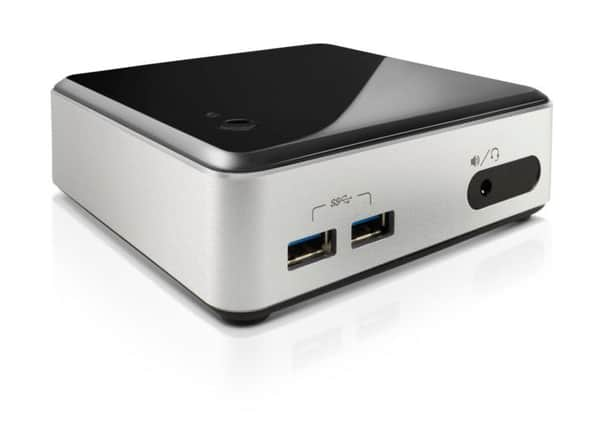Tech Talk: A proper computer that fits in your palm


Even if you still want the large screen ease of a fixed desktop computer rather than a more portable laptop, the days of having to wire it up to an ugly, towering base unit have long gone. You can have something equally powerful in a unit the size of a cigar box.
The new generation of Micro PCs can be housed discretely on or under your desk, and moved around the house as your needs dictate. They’re not out of place in a living room and require only two cables to operate – one to the mains, the other to your monitor. Intel, the leading maker of computer processors, has led the charge on tiny PCs with a range it calls Next Unit of Computing, or NUC for short. Rival makers like Gigabyte, Asus and Zotac are also on the mini-bandwagon.
Advertisement
Hide AdAdvertisement
Hide AdThe well-known rule of Moore’s Law, coined by Intel’s own founder and dictating that the miniaturisation of computer components doubles every two years, is what is at work here. Micro PCs can be specified with a range of processors, from budget workhorses to top-of-the-range Intel Core i7 chips. You run them with a wireless mouse and keyboard and a wifi internet connection. There isn’t usually room for a DVD drive, but you can plug in an external one whenever you need.
When you need to print something, you can send documents to a wifi printer elsewhere in your house.
You don’t even need a dedicated monitor, because thanks to HDMI connectivity, you can use your TV set instead. Such a set-up is also ideal as an entertainment centre, with videos stored on the PC played direct to your TV and home cinema system.
For the average home office worker and web surfer, it’s a way of claiming your house back from the technology that has been threatening to overrun it.